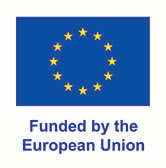With the support of the European Innovation Fund, which aims to promote innovative low-carbon technologies, the EDF Group is going to deploy 800 Vehicle-to-Grid (V2G) charging stations across Europe, notably in France.
This project, which has been named EVVE (Environmental Valorization of Virtual Electricity storage), enables the large-scale development of V2G. Contributing to the decarbonization of transport, the project also enhances the use of renewable energies.
The EVVE project: creating a gigantic virtual battery of over 8 MW
This Europe-wide project, led by the EDF Group and its subsidiary Dreev, is based on Vehicle-to-Grid technology, which makes it possible to use electric vehicles as a means of storing energy and feeding electricity back into the customer's electricity network (site, building, etc.) when the vehicles are not in use. Its ambition is to deploy and aggregate around 800 bi-directional charging stations across Europe to form a virtual battery with a capacity of 8.36 MW, which draws its energy from hundreds of compatible electric vehicles.
This project is subsidised by the European Innovation Fund, and benefits companies and local authorities that wish to electrify their vehicle fleet. These terminals are also deployed as part of the EV100 initiative within the EDF group, which aims to convert 100% of its light vehicle fleet to electric by 2030.

The EVVE project in figures
-

800
bi-directional charging points
-

25 000
tonnes of CO2 less
-

8,36 MW
virtual battery power created

